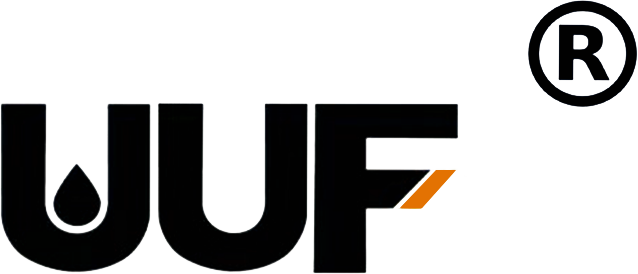The Importance of Quality Control in Oil Seal Manufacturing
Time:
2025-04-07
The Importance of Quality Control in Oil Seal Manufacturing Table of Contents 1. Understanding Oil Seals: Definition and Functionality 2. The Role of Quality Control in Manufacturing 3. Key Quality Control Processes in Oil Seal Production 3.1 Material Selection and Testing 3.2 Production Process Monitoring 3.3 Final Inspection Procedures 4. Benefits of Rigorous Quality Control 5. Common Challenges
The Importance of Quality Control in Oil Seal Manufacturing
Table of Contents
1. Understanding Oil Seals: Definition and Functionality
2. The Role of Quality Control in Manufacturing
3. Key Quality Control Processes in Oil Seal Production
3.1 Material Selection and Testing
3.2 Production Process Monitoring
3.3 Final Inspection Procedures
4. Benefits of Rigorous Quality Control
5. Common Challenges in Quality Control for Oil Seals
6. Case Studies: Successful Quality Control Implementations
7. Future Trends in Oil Seal Quality Control
8. Frequently Asked Questions (FAQs)
9. Conclusion
1. Understanding Oil Seals: Definition and Functionality
Oil seals are essential components in a variety of machinery and vehicles, including cars, motorcycles, and industrial equipment. These rubber or synthetic seals are designed to prevent leakage of fluids while keeping contaminants out. In the automotive industry, oil seals help maintain optimal performance by ensuring that engine oil, transmission fluid, and other lubricants remain contained. Given their critical role, the production of oil seals must adhere to stringent quality standards to ensure their reliability and effectiveness.
2. The Role of Quality Control in Manufacturing
Quality control is a systematic process aimed at ensuring that products meet specific requirements and standards. In the context of oil seal manufacturing, quality control is vital for several reasons:
- **Safety**: Poorly manufactured seals can lead to fluid leaks, which might result in hazardous situations, especially in vehicles.
- **Performance and Longevity**: High-quality seals contribute to optimal performance and extend the lifespan of machinery and vehicles.
- **Cost Efficiency**: Implementing effective quality control measures reduces waste and minimizes the cost associated with defective products.
3. Key Quality Control Processes in Oil Seal Production
To ensure the highest standards in oil seal manufacturing, several key processes must be implemented throughout the production cycle.
3.1 Material Selection and Testing
The first step in quality control involves careful selection of materials. Different types of rubber compounds and synthetic materials have varying properties that affect durability, flexibility, and resistance to environmental factors. Rigorous testing of raw materials ensures that only the best options are used in production. Tests such as tensile strength, hardness, and thermal stability are essential in evaluating material performance.
3.2 Production Process Monitoring
Once materials are selected, the manufacturing process must be closely monitored. This includes:
- **Machinery Calibration**: Regular checks on machinery to ensure that it operates within specified parameters.
- **Process Documentation**: Maintaining detailed records of production processes helps identify deviations and areas for improvement.
- **In-Process Inspections**: Conducting inspections at various stages of production to detect issues early on can prevent defects in the final product.
3.3 Final Inspection Procedures
The final inspection is a crucial step in ensuring product quality. This stage typically involves:
- **Dimensional Checks**: Verifying that the final products meet specified dimensions and tolerances.
- **Functional Testing**: Assessing the seals’ effectiveness under simulated working conditions.
- **Visual Inspection**: Checking for surface defects, inconsistencies, and overall quality before packaging.
4. Benefits of Rigorous Quality Control
Implementing rigorous quality control measures in oil seal manufacturing offers several significant benefits:
- **Enhanced Product Reliability**: Consistent quality leads to a reputation for reliability among manufacturers, fostering customer trust.
- **Increased Customer Satisfaction**: High-quality products meet or exceed customer expectations, leading to repeat business and referrals.
- **Reduced Return Rates**: Effective quality control minimizes the likelihood of defective products reaching customers, reducing return rates and associated costs.
5. Common Challenges in Quality Control for Oil Seals
Despite its importance, maintaining quality control in oil seal manufacturing presents several challenges:
- **Material Variability**: Variations in raw materials can lead to inconsistencies in product quality.
- **Production Fluctuations**: Changes in production volume or speed can affect the quality of the output.
- **Technological Limitations**: Inadequate monitoring technology may hinder the ability to detect defects early in the process.
6. Case Studies: Successful Quality Control Implementations
Examining successful quality control implementations provides valuable insights into best practices.
- **Example Company A**: After integrating an automated inspection system, this company reduced its defect rate by 30%, leading to significant cost savings and enhanced customer satisfaction.
- **Example Company B**: By adopting a continuous improvement approach, Company B was able to streamline its production processes, resulting in a 20% increase in overall efficiency without compromising product quality.
7. Future Trends in Oil Seal Quality Control
As technology advances, several trends are emerging in quality control for oil seal manufacturing:
- **Smart Manufacturing**: The integration of IoT devices allows for real-time monitoring and data analysis, enhancing quality control processes.
- **Sustainability Practices**: Increasing emphasis on environmentally friendly materials and manufacturing practices is shaping quality standards.
- **Predictive Analytics**: Leveraging data analytics can help predict potential quality issues before they occur, allowing for proactive measures.
8. Frequently Asked Questions (FAQs)
1. What materials are commonly used in oil seal manufacturing?
Common materials include rubber compounds such as Nitrile, Viton, and silicone, each selected for their specific properties.
2. How are oil seals tested for quality?
Oil seals undergo various tests, including dimensional checks, functional performance evaluations, and visual inspections.
3. Why is quality control important in oil seal manufacturing?
Quality control ensures that oil seals function effectively, maintain safety standards, and meet customer expectations.
4. What are the consequences of poor quality oil seals?
Defective oil seals can lead to fluid leaks, machinery failure, and safety hazards, resulting in costly repairs and reputational damage.
5. How can technology improve quality control in manufacturing?
Advanced technologies, such as automation and predictive analytics, enhance monitoring and detection of defects, streamlining quality control processes.
9. Conclusion
Quality control in oil seal manufacturing is paramount for ensuring product reliability, performance, and customer satisfaction. By implementing rigorous processes throughout the production cycle—from material selection to final inspections—manufacturers can deliver high-quality seals that meet the demands of modern automotive and industrial applications. As the industry continues to evolve, embracing technological advancements and sustainable practices will further enhance quality standards, ensuring the longevity and effectiveness of oil seals in the marketplace.
Keyword:
Oil Seal manufacturer


















